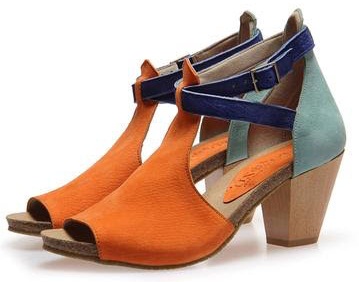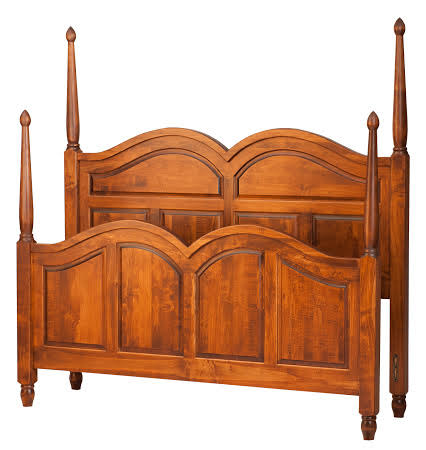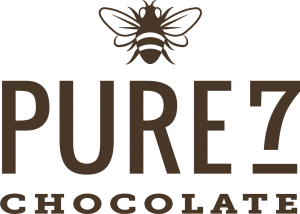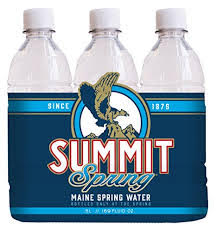
Art | Resources
Himalayan Salt Lamps as Air Filters
Question from Bonnie Johnson
Hi Debra,
Does anyone have any experience using one of these? They are supposed to purify the air in your home.
Especially did it help a sinus condition?
Debra’s Answer
I had a Himalayan Salt Lamp in my bedroom for a while, but I had to remove it because I couldn’t sleep. I finally just gave it away.
As beautiful as they are, I wouldn’t use one as an air filter.
Salt lamps are natural source of negative ions.
At any given time, there are both positive and negative ions in the air. Negative ions are often found in nature, often created by lightening storms, sunlight, waterfalls, ocean waves and other natural processes. A salt lamp produces negative ions during the evaporation of water attracted to the lamp by the salt.
Positive ions are often created by electronic devices like computers, TVs, microwaves, and vacuum cleaners. They are known to contribute to problems like allergies, stress and sleep trouble.
Negative ions can neutralize positive ions by bonding with them.
Since air pollutants such as airborne mold, bacteria, and allergens often carry a positive charge, they can be neutralized by negative ions.
But that’s the limitation of a salt lamp as an air purifier.
For air purifiers that work to remove a broad spectrum of particles and chemical pollutants, visit the Air Filters page of Debra’s List.
Flame Retardants
Question from Michelle W
Hi Debra,
I recently contacted a small furniture company to ask about the toxicity of the materials they use. Here’s part of their reply:
“The inner liner is made of a Polyester (92%) / Spandex (8%) blend. Likewise, they contain no known latex content. However, they are treated with a flame retardant called Pyrovatex SVC. This material is not known to cause allergic reactions or contain latex derivatives and is non toxic.”
I tried to look up the MSDS for the Pyrovatex flame retardant, but the website seems to be down (and has been for at least a week.) Do you know anything about this flame retardant or how they can claim it is nontoxic?
Thanks!
Debra’s Answer
Pyrovatex is a trade name for Phosphonic acid, (2-((hydroxymethyl)carbamoyl)ethyl)-, dimethyl ester
Phosphonic acid is an organophosphorus compound. There are many types of phosphorates, including Gyphosate (“Roundup”).
Here is an MSDS for Phosphoric Acid
It says it’s 98% phosphorous acid.
There is no toxicity information given, however, it is hazardous by burning the skin and is harmful if swallowed. Inhalation can cause chemical burns to the respiratory tract.
That’s how they can say it’s nontoxic.
It doesn’t appear to be volatile, so if you are not inhaling it as a powder, it would be not toxic.
What Lightbulbs Should I Use?
Question from Dawn Magstadt
Hi Debra,
Thank you for all you do. Hey, I was wondering, I’ve come upon yet another seemingly simple thing with huge implications, lighting.
I’ve been avoiding the light bulb situation and I won’t buy the curly ones (mercury is mercury–bad enough. I have some in my mouth and the fish I eat, and like who’s gonna really toss the bulbs not in the trash can? please.
Then the Dollar Store, my refuge from Walmart confusion, let me down in that
they burned out within a month this time. So I resigned myself to go to Menards (like Home Depot etc) and saw LED.
Then there’s some kinds (can’t recall–from another excursion) that say they can get hot(I’m thinkin’ that’s Halogen). I had 3 Halogen tall pole lamps in the 90s and I never bought a replacement bulb in 10 years! I take that back, maybe once for one. Then I divorced and who knows, they probably still burned after that. So a few years ago I merely bought a desk Halogen and it burned out in a week! I’m like what gives in a decade? Now they burn out? Made no sense.
I don’t want any bulbs to start a fire in my cheapy Goodwill lamps, my god. Might as well burn beeswax candles; at least it would be healthy and cost about the same as those expensive bulbs. I don’t mind expensive if it lasts, but then I read LED is directional and may keep melatonine from happening. I love the light they give but not on people’s cars (which seems like I’ve seen–too bright, albeit clear, must be hunting snipes, lol). I thought those for melatonine were the UV watcha ma call it clear bulbs. It’s nice they all are in light bulb form now but it was easier to know what was what when their shapes were different. I mean Halogen were little bity, not a bulb.
And then they (the god makers of light) claim regular florescent works for plants when in fact, I read before you’d have to have them no further away than 4″, now they act like any old bulb will do. How can that have changed in only 7 yrs?
Would they just organize it, make up their minds so I can just grab a pack of bulbs and feel comfortable that I won’t burn my apt building down and lose everything and that I won’t get depressed
or end up with a sleep disorder. I mean come on people.
So I’m saying…have you done any research?
It just seems odd, does it not, that when it’s all about light, it’s in the dark. And of course it’s complicated and of course it’s polluted.
Debra’s Answer
I’ve done a lot of research about this over the years and could organize it, and will, but can’t in this blog post today. Lighting is changing so quickly it’s hard to keep up with it.
I’ll just give you a quick answer by telling you what I use.
First, I’ve done things to have more natural light in my home, like install skylights. I have a big skylight over my shower, so I rarely turn on a light when I go in the bathroom. Even at night I have a little nightlight, so there’s no need to turn on the overhead light.
Then, I’ve purchased light fixtures that take incandescent type bulbs. And I use Philips EcoVantage bulbs, which are halogens inside of a bulb that is the same size and shape as an incandescent. I’ve never had a problem with overheating.
I also have a fixture over my kitchen sink that takes small halogens. It’s all metal and glass, so no problem with overheating. The fixture is designed for halogens.
As a rule, I don’t use overhead lights, except in the hallway. I much prefer task lighting, which also saves energy.
Simple.
Hope this helps your dilemma!
A Sensational Spin on Toxics in Consumer Products
This week there has been a an article going around with the sensational headline:
There Are ‘Fracking’ Chemicals In Your Toothpaste,
Detergents and Ice cream.”
Well, I wanted to know what horribly toxic fracking chemicals were in toothpaste, so I started reading the article. But it just didn’t make sense.
So I searched for a different article on the subject and found the original press release about the study, which said no such thing.
In fact, the study tested samples of fracking fluid collected in five states, and found that the chemicals contained in fracking fluid were “no more toxic than substances commonly found in homes.”
The pollutants were various forms of ethylene oxide.
According to the Occupational Safety and Health Administration (OSHA) , ethylene glycol can have a variety of health effects.
In addition to eye pain and sore throat, exposure to EtO can cause difficult breathing and blurred vision. Exposure can also cause dizziness, nausea, headache, convulsions, blisters and can result in vomiting and coughing. Both human and animal studies show that EtO is a carcinogen that may cause leukemia and other cancers. EtO is also linked to spontaneous abortion, genetic damage, nerve damage, peripheral paralysis, muscle weakness, as well as impaired thinking and memory. In liquid form, EtO can cause severe skin irritation upon prolonged or confined contact.
It is used in the production of many consumer products, and may not appear on the label.
My point here is that information on toxics in consumer products should be presented in a factual way and not in a way that is misleading. Fracking chemicals were NOT found in toothpaste, detergents and ice cream. They were found in fracking fluid.
I take issue with both the article and the press release. One made it sound more toxic than it is, the other lessened the concern by comparing it to innocent household products.
I prefer facts.
Po-Zu Shoes
 These amazing shoes are made from organic cotton, wool, coconut husks, natural latex, cork, and leather. “All our materials come from naturally renewable sources and are responsibly harvested. They contain no pesticides, bleaches or toxic dyes and are locally sourced wherever possible. We use organic cotton in our shoes and all our leather is chromium-free. You can read about our materials in more detail here.” Every shoe has a complete materials description (click on the “materials” tab on each product page). Great styles! This company is based in the UK. I don’t usually recommend websites out of the country, but I’ve never seen anything like these shoes! You can even have them custom-make shoes to your own design specifications.
These amazing shoes are made from organic cotton, wool, coconut husks, natural latex, cork, and leather. “All our materials come from naturally renewable sources and are responsibly harvested. They contain no pesticides, bleaches or toxic dyes and are locally sourced wherever possible. We use organic cotton in our shoes and all our leather is chromium-free. You can read about our materials in more detail here.” Every shoe has a complete materials description (click on the “materials” tab on each product page). Great styles! This company is based in the UK. I don’t usually recommend websites out of the country, but I’ve never seen anything like these shoes! You can even have them custom-make shoes to your own design specifications.
Erik Organic
 Hardwood furniture, individually handcrafted with love by woodworking artisans, in beautiful modern designs. Choose from furniture for dining room, living room, office, and bedroom…even handcrafted office chairs. All can be customized to your needs. They use my favorite Tite Bond glue and a low-VOC finish is available by request “for people with MCS”.
Hardwood furniture, individually handcrafted with love by woodworking artisans, in beautiful modern designs. Choose from furniture for dining room, living room, office, and bedroom…even handcrafted office chairs. All can be customized to your needs. They use my favorite Tite Bond glue and a low-VOC finish is available by request “for people with MCS”.
Pure 7 Chocolate
 Raw, organic, unprocessed chocolate bars and bites, sweetened with organic honey. 72 or 80 percent cocoa. “We craft raw artisan chocolate using the world’s purest and best organic ingredients, and use innovative low heat techniques to keep the chocolate in its most pure and potent form. After lots of experimenting (and lots of tasting), we came up with a groundbreaking method of making mouth-watering chocolate, sweetened naturally using only raw honey. What’s not to love? There’s no dairy, soy, gluten, refined sugars, preservatives, or chemicals in our chocolate – only organic, pure ingredients.” I’ve tasted this chocolate and it’s delicious! Even though it’s raw and pure, it’s like a regular chocolate bar…only better.
Raw, organic, unprocessed chocolate bars and bites, sweetened with organic honey. 72 or 80 percent cocoa. “We craft raw artisan chocolate using the world’s purest and best organic ingredients, and use innovative low heat techniques to keep the chocolate in its most pure and potent form. After lots of experimenting (and lots of tasting), we came up with a groundbreaking method of making mouth-watering chocolate, sweetened naturally using only raw honey. What’s not to love? There’s no dairy, soy, gluten, refined sugars, preservatives, or chemicals in our chocolate – only organic, pure ingredients.” I’ve tasted this chocolate and it’s delicious! Even though it’s raw and pure, it’s like a regular chocolate bar…only better.
Potting Shed Creations
Creative “starters” for growing gardens anywhere, including upcycling bottles into practical planters, garden-in-a-(rice paper)-bag for sunny windowsills, darling replanted steel “window boxes” to grow indoors on a sill, and many more clever ideas for your own home or gifts. And, they have their own USDA organic certification for handling seeds and bulbs, in addition to the materials being organic, renewable, found, and reclaimed. I loved browsing this site and getting ideas for how to grow food in simple ways.
Daneson
“Fine flavored toothpicks” that come in little glass vials so you can carry them with you. They are made in the USA from birch and other materials obtained from American and Canadian suppliers. The company is a net contributor to the environment, maintaining a minimum 1:100 ratio of milling to repeating forestland. The flavors are original blends, all natural, and organic when possible.
Summit Spring
 Raw “Living” Spring Water “gathered from one of the oldest and most revered natural spring water sources in North America and comes to you just as it “bubbles from the spring™” mere minutes after leaving the Earth…Summit Spring, the source of Raw Water, is so pure that we were given the first and only exemption from treatment in Maine’s history. Summit Spring water exceeds every State and Federal guideline for drinking water, straight from the ground…The fact that we capture real, natural Maine spring water from a centuries old true free-flowing source, without the use of pumps or boreholes and then gravity feed the water to our bottling facility located just 50′ away, without any transport, with complete control over “cradle to grave” packaging coupled with decades long testing and safety history-gave the regulatory bodies confidence in awarding this unprecedented approval.” Comes in glass or PET bottles.
Raw “Living” Spring Water “gathered from one of the oldest and most revered natural spring water sources in North America and comes to you just as it “bubbles from the spring™” mere minutes after leaving the Earth…Summit Spring, the source of Raw Water, is so pure that we were given the first and only exemption from treatment in Maine’s history. Summit Spring water exceeds every State and Federal guideline for drinking water, straight from the ground…The fact that we capture real, natural Maine spring water from a centuries old true free-flowing source, without the use of pumps or boreholes and then gravity feed the water to our bottling facility located just 50′ away, without any transport, with complete control over “cradle to grave” packaging coupled with decades long testing and safety history-gave the regulatory bodies confidence in awarding this unprecedented approval.” Comes in glass or PET bottles.






